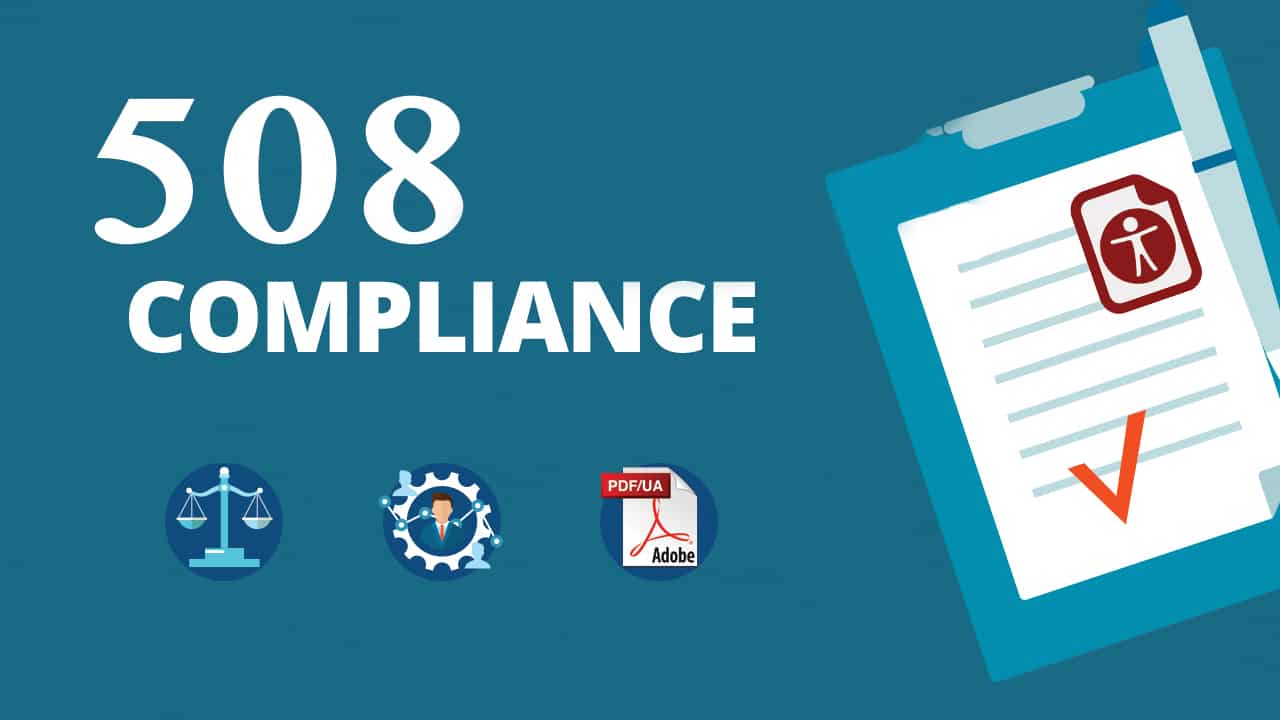

This is accomplished by standardization of the content structure within the PDF files and the technology capabilities available to the end user (including assistive technologies). Users should be able to use the documents without assistance from others, in an efficient manner, and be able to receive the same value from the content as people without disabilities. The goal of the PDF/UA standard is for everyone to be able to independently access information contained within a PDF document. The standard contains specifications for accessible PDF documents, as well as conforming PDF readers and assistive technologies.
#Document accessibility standards iso#
The standard is a companion to ISO 32000-1:2008 (the PDF specification). Published as an International Standard in 2012 (ISO 14289), the PDF/UA format provides clear normative terms for achieving accessibility in the PDF format. The PDF/UA standard (Universal Accessibility)


Find your state program using the above link. National Assistive Technology Act Technical Assistance and Training (AT3) Center The mission of the AT3 Center is to increase access to and acquisition of assistive technologies by individuals with disabilities across the lifespan. Department of RehabilitationĪccessible Media Services - National Center for Accessible MediaĪssistive Technology, Accommodations and the ADA 2011 - Cornell University Although it provides suggestions, the guide is not meant to be the definitive word on alternative formatsĪccessible Documents: Seven Steps to Creating an Accessible Microsoft Word Document - Ca. Assistive technology can include mobility devices such as walkers and wheelchairs, as well as hardware, software, and peripherals that assist people with disabilities in accessing computers or other information technologies.īelow are links to materials and information on accessible websites, electronic document accessibility and assistive technology.ĪbleData - Tools and Technologies to Enhance Life - Database for unbiased, comprehensive information on products, solutions and resources to improve productivity and ease life’s tasks.Īccessible Document Reference Guide - Rocky Mountain ADA CenterĪccessible Documents: Providing Information in Alternative Formats 2018 - Western University This guide concentrates on those formats that complement conventional print and video products. That includes access to Title III entity websites which must be accessible.Īssistive technology is technology used by individuals with disabilities in order to perform or improve functions that might otherwise be difficult or impossible. Title III entities are, however, obligated to provide access to their goods and services by individuals with disabilities. Currently WCAG 2.0 guidelines are not a requirement of DOJ for Title III entities using the web. Title III of the ADA prevents discrimination on the basis of disability by places of public accommodation (businesses that are open to the public). (State and local governments are covered under Title II of the ADA.) Currently Section 508 requirements only apply to Federal agencies unless they are adopted by a state or local government. Section 508 is enforced by the US Access Board. Federal agencies are obligated under Section 508 of the Rehabilitation Act of 1973 to design websites and develop electronic documents so they meet minimum standards to ensure they are accessible to and useable by individuals with disabilities. Accessible Information and Communication Technology (ICT) makes accessing electronic communications and equipment available to individuals with disabilities.


 0 kommentar(er)
0 kommentar(er)
